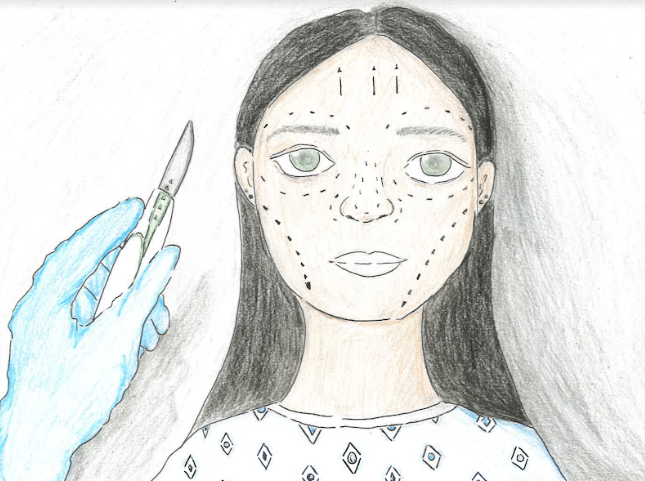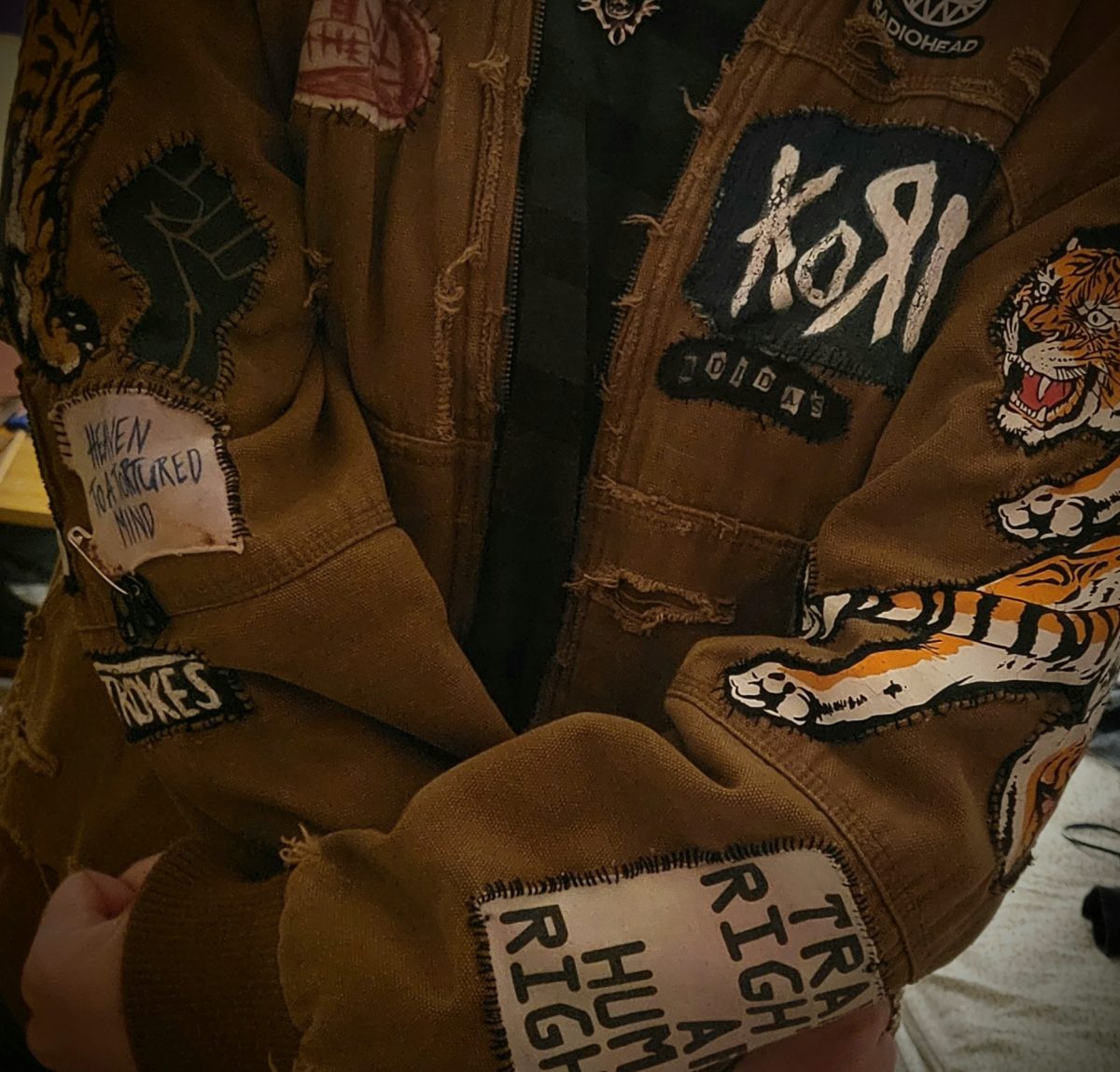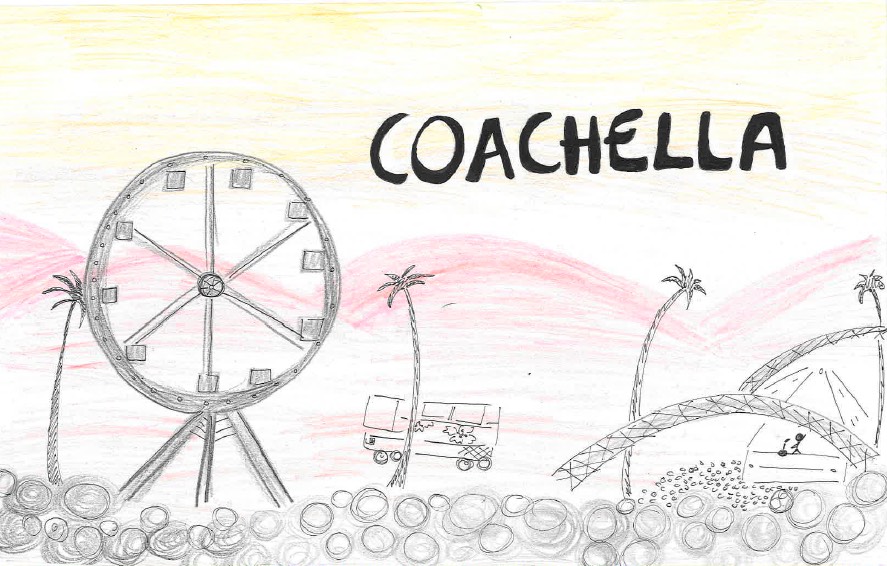A skinny figure, pale skin, button nose, doe-eyes, plump lips and curves only in the right places! These are just some of the requirements that women have to follow — and have had to follow for decades now — to be considered conventionally attractive in today’s society.
In our society, women are told for the majority of their lives to dress and act a certain way. Throughout the 20th century, beauty standards for women were very unattainable, and unfortunately, this pressure has persisted into the 21st century. In order to obtain the “perfect body,” you were expected to be petite, fair-skinned and have an hourglass-like figure along with a faceful of makeup.
These standards that young girls are being taught by the media and society at large continue to be harmful for their self-esteem. It could potentially lead to young girls attempting dangerous beauty procedures on their bodies like getting botox and using waist trainers just to achieve the ideal standard that’s being held above their heads.
Along with girls and women having to stress over how they look, they also have to worry about how they dress. Some aspects of Western culture emphasize and promote individualism and creativity, but clothing, sadly, remains a nearly universal source of scrutiny.
“People can dress however they want, but many people will still judge it,” Yumma Ali (10) said.
Between these constantly looming issues of dress, makeup and body type, there exists a specific form of privilege that only benefits a very small percentage of girls and women. “Pretty privilege,” as it’s come to be known, is essentially a concept that states if you’re not stereotypically good-looking, then there is a difference in how people will treat you. It’s often considered that people who are considerably more beautiful than others can become more successful in life. This harmful concept can easily affect a woman’s thoughts on things such as self-worth and how they perceive themselves compared to other women.
Social media is also a major contributor to how girls and women perceive themselves. Instagram in particular is a platform where many people tend to heavily edit pictures of themselves in order to feel like they have a perfect figure. Many influencers as well have been found doing this routine to portray an unrealistic version of themselves on the internet. Women are also exposed to content that promotes toxic trends, one of which is often referred to as “thinspo,” where content creators post glorified images of thin people and encourage unhealthy eating habits to teen girls.
Along with the severity of beauty standards in the U.S. and other Western nations, many Asian countries also hold extremely high and unrealistic beauty standards, especially in South Korea and China. By Korean beauty standards, for instance, women are taught to have fair skin, a slim figure and ideally look like a K-pop idol.
“Beauty standards are something you can never win at,” Sheila Thach (10) said. “Idols are also at the peak of beauty standards so trying to look like them and follow them is very appealing to the younger audience.”
Korea’s fixation on looking a certain way to become socially acceptable is genuinely a harmful thing that’s being embedded into the minds of teenage girls. Promoting the act of undergoing cosmetic surgery to achieve the look of a pop star and experiencing the onslaught of pressure focused on physical appearance as a young girl can lead to feeling insecure about their natural features.
China’s standards are outrageously unbelievable as well. The TikToker @candiselin86 often discusses the availability of China’s clothing sizes, as they are getting smaller and smaller — and larger sizes are becoming harder and harder to find. Just as bad, the comparison of a large tank top in China is half the size of a large tank top in America. She also shows an image of a women’s size medium in China being almost identical in size to a three- to four-year-old kid’s shirt in America. The double standards for women are acutely visible in advertising, where skinny female models pervade film and print commercials, while men’s clothing ads are much more representative of common body types.
Although we have to deal with having these standards put on us, we also need to start changing that mindset to create a better future. No one deserves to feel belittled just because they look a certain way, and they shouldn’t feel the need to change themselves just to appeal to society’s standards. Even in the model industry, designer brands are starting to become more inclusive, having women of all different colors and body types! That in turn shows that you don’t need to conform to a trend to be considered pretty. Society will likely still have these unrealistic standards set for women, but it doesn’t mean that you should have to follow them to feel confident and good about yourself.
Rather than being the world’s ideal woman, be somebody you truly love — be yourself, and embrace your features. That will always make an individual much more beautiful in the long run.









